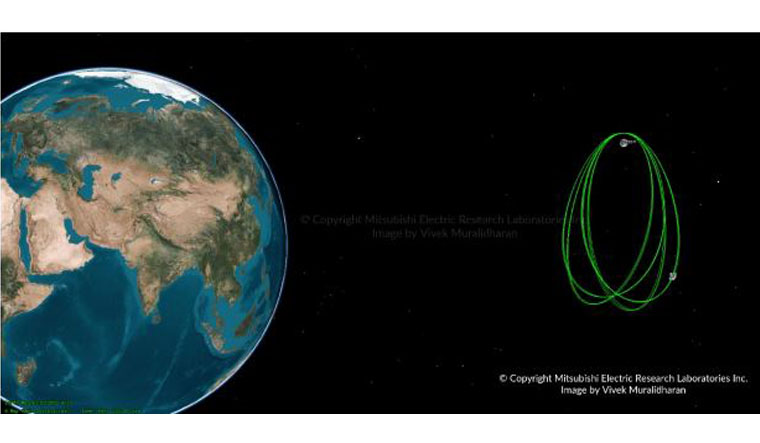Space exploration has always been a topic of fascination for humanity. However, the cost of sending missions to space has been a major obstacle for many years. But what if there was a way to reduce the cost of space missions and make them more accessible to everyone? Here comes the Circular-Restricted Three-Body Problem (CR3BP).
If you throw an object on Earth it will fall back to Earth, the same is the case on the Moon. Ever wondered what would happen if you threw the same object somewhere in between the Earth and Moon? Well, the answer is not straightforward. Spacecrafts particularly close to the Earth or to the Moon moves in almost circular or elliptical orbits. However, when both the gravitational forces due to the Earth and the Moon become significant, the motion is quite non-linear and complex. The CR3BP is a mathematical model that describes the motion of a small object in the gravitational field of two larger objects, such as a spacecraft in the presence of the Earth and the Moon. By engineering this model, astrophysicists and space engineers can plan missions that are both cost-efficient and scientifically valuable.
One of the main advantages of the CR3BP is that it allows spacecraft to use the gravity of larger objects to save fuel and energy. By meticulously planning the trajectory of the spacecraft, engineers can make use of the gravitational pull of the Earth and the Moon to send spacecraft on long-duration missions, and eventually to deep space destinations such as asteroids, comets, and other planets.
The CR3BP has already been successfully used in several space missions, starting way back in the 1970s. Recently launched NASA's Artemis programme, which eventually plans to send astronauts to the Moon by 2024 leverages the trajectory optimized in the CR3BP. By doing so, NASA expects to reduce a significant amount of fuel and energy needed for the missions, making them more cost-efficient and sustainable.
The Circular-Restricted Three-Body Problem is a powerful tool that can help make space exploration more accessible and cost-efficient. It has numerous potential applications for future space missions, such as asteroid mining and of course Mars exploration and other deep space activities. By leveraging the gravitational pull of celestial bodies, engineers can plan missions that are both scientifically valuable and sustainable. Add to that, Solar radiation pressure can also be utilized to propel the spacecraft. In theory, almost zero-cost space missions can be planned just by exploiting natural forces. We look forward to a future where space exploration is within reach for everyone.
Vivek Muralidharan is a space scientist, and was featured as one of the "20 under 35" people in the global space industry by Space & Satellite Professionals International (SSPI) in 2022.



